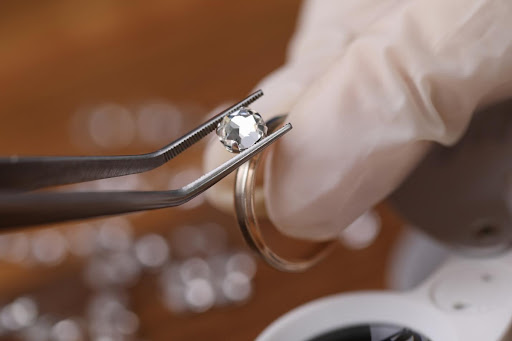
Technology is ever evolving and changing the way we perform many functions in our daily lives. It has profoundly impacted several industries globally, including jewellery production. Thanks to new developments in technology, today’s engagement rings are the perfect amalgamation of artistry, engineering, and innovation.
Experienced jewellers have the knowledge and tools to determine which aspects of jewellery production can benefit from innovative technology and which parts are better done by hand. Combining the advancement of technology and the valuable skills of experienced designers is the ideal way to create an engagement ring that you and your partner will cherish forever. Learn more about technology and innovation in engagement rings below.
The Power of CAD & CAM
Hand-drawn sketches on paper remain valuable for their artistry in the ring design process, and thanks to computer-aided design (CAD), jewellers can now supplement their drawings with digital renderings to create stunning engagement ring designs with incredible precision.
CAD software allows designers to draft intricate patterns and experiment with various styles in a virtual environment, bringing their creative visions to life like never before. Couples can actively participate in the design process, customizing their dream rings to perfection, uniquely reflecting their love story.
Once the digital design is complete, it is transferred to a computer aided manufacturing (CAM) software, which takes the 3D model and generates instructions for the manufacturing machinery to follow.
Use of Modern Machinery
Various modern machinery ensures precision, efficiency, and quality when using technology to create an engagement ring. Here are some of the standard machineries you might find in a jeweller’s studio when using technology for engagement ring fabrication:
- 3D Printer: A 3D printer is used to turn the digital CAD design into a physical prototype. This model can serve as a master pattern for casting or as a sample for the client’s approval before proceeding with the final ring.
- Casting Machine: This machine casts the metal for the engagement ring. It involves melting the metal and pouring it into a mould created using the 3D-printed prototype. The casting process ensures accurate reproduction of the design.
- Laser Welder: A laser welder is a precise jewelry-making welding tool. It allows jewellers to join metal parts without the need for solder, reducing the risk of damaging gemstones or delicate elements of the ring.
Combination of Technology & Handwork
A significant advantage of incorporating technology in jewelry-making is the ability to tailor your approach according to your specific requirements. Reputable jewellers like Alexis Gallery know how to combine technology with their design skills to ensure the final product is unique and of the highest quality.
While they use the latest technology for specific steps, they realize that much of it is a craft passed down from generation to generation. Custom fine jewellery is done by hand and requires great skill, so they combine technology and handwork to create the perfect final piece for their clients.
The world of engagement rings has been transformed by technology and innovation, providing couples with a wide array of choices to design the ideal representation of their love and dedication. Work with a reputable jeweller that uses technology in their process but also knows when to step away from innovation and rely on analog handcraft to create the perfect ring for couples.
You may be interested in: 7 Benefits of Equipment Financing for the Manufacturing Industry
from Latest Technology News https://ift.tt/P1exfOd
via IFTTT



0 Comments